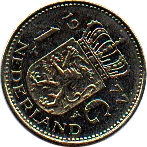

To make your own simulation using Excel or Google sheets, use the "RANDBETWEEN" function and enter 1 and 2. Coin flips can make for decent random numbers, but if you need better ones.
#Random coin flip how to#
How to make your own simulation using Excel or Google Sheets? Once the flip has been analysed, a sliding aperture is used to push the coin back towards the flipper for the next cycle. Here are the benefits of simulating a coin toss.ĥ. It is much easier and simpler than choosing.Ĥ. We flip a coin to make decisions for ourselves instead of having to choose. How does a coin toss work?Ī coin is a simple tool that was made to decide between two options. Since heads is one and tails is zero, we can just add up the results from the flips, or the bits from the random generator. What is a coin toss simulation?Ĭoin toss simulation is a game where two people flip a coin back and forth until one of them has at least one side with either all heads or all tails. If you did 10 flips with two people per coin then that would only be 100 coins total between them both. So my friend was actually totally wrong about doing more than 100 flips of the coin. But before you read on further, try figuring out what is wrong with the game! When she said that, I just started thinking about how this made sense and how it wouldn't work with the same two people.Īfter thinking about it for a few minutes, I realized what this guy meant. So then this guy that was really quiet before (he was also in class today, which is why I know his name) said that he had heard you could bet up to 1337 coins, but our teacher said no because that would be too many.

But anyhow, we were playing this game and I was telling them about how you can bet more than 50 coins with two people. So if you got a hundred-year-old coin and it landed heads, it'd be worth 100 points. The previous coin flip doesn’t influence the next one, so. The flip’s breakpoint is at 0. It generates a random number between 0 and 0.99999999, so you can use the generated number to determine whether it will result in a head or a tail. The built-in Math.random () method can simulate a coin flip in JavaScript. But here’s where the mystery comes in: there’s nothing to prevent heads from coming up every time in 10 throws. Use Math.random () to Simulate Coin Flip in JavaScript. With our random coin flip generator, you can be sure that either result has a 50/50 chance of coming up. In fact, the reason coin tosses are random has nothing to do with coins at all They are random because the people. Or if the coins are different values, they could be worth more points if it lands on your side, and the coins would equal the face value of your coin when it lands on heads. A random coin flip has two possible results: heads or tails. The answer is not because a coin is magical. And then we played the coin toss game that you play when you are bored at school or work or something, where you have to guess heads or tails for fifty coins. Perhaps it's actually supposed to always generate 5 and I'm doing something wrong in my code.So I was teaching a class and we were talking about probability. It seems to me that the first automatic input is supposed to generate only one flip, and then for the second time, it generates 5, but I don't know how to do that.

Print("Heads!")and this is the error I'm getting: For example, running the program a second time resulted in this: Obviously, as the program applies random activities, it may give any combination of five heads or tails. When working correctly, the program prints out something like this: This exercise is confusing me: The idea here is to create a program, which simulates coin flips by randomly selecting 0 (Tails) or 1 (Heads) and printing out the result.


 0 kommentar(er)
0 kommentar(er)
